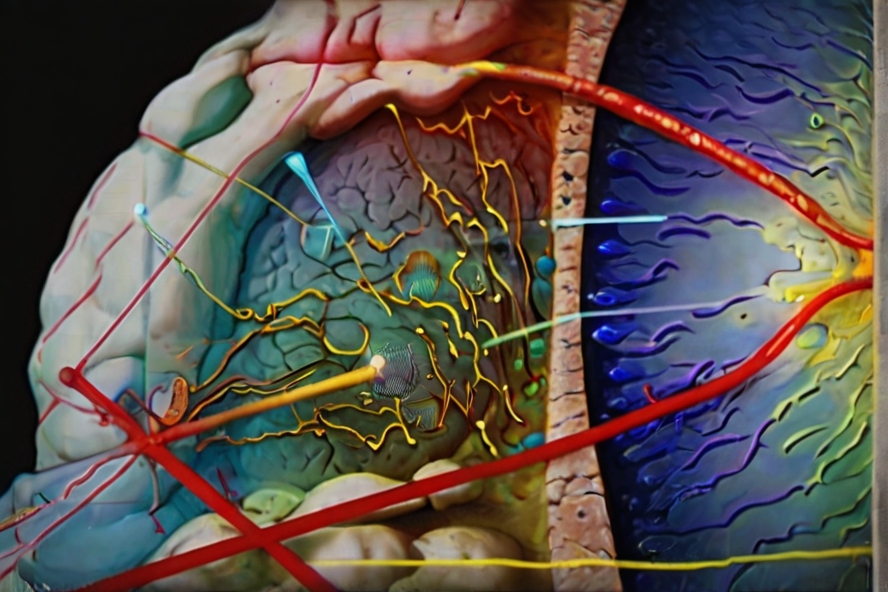
Have you ever wondered how we are able to see the world around us?
It’s all thanks to a small but mighty part of our brain called the visual cortex.
In this article, we’ll explore what the visual cortex is, where it’s located, its structure and function, and how it shapes our perception of the world.
We’ll also discuss how to train and enhance the visual cortex.
What is the visual cortex?
The visual cortex, situated in the occipital lobe at the posterior of the brain, is tasked with the interpretation and comprehension of visual stimuli.
This crucial region processes information received through our eyes, enabling us to make sense of the images presented to us.
- Read also: Exploring the Significance of the Motor Cortex
- Read also: Understanding Slow Brain Waves and Their Symptoms
Location
Situated at the rear of the brain, the visual cortex resides in the occipital lobe.
This region is bifurcated into two hemispheres, with each hemisphere dedicated to processing information received from the corresponding eye on the opposite side.
Structure
Comprising six layers of cells, the visual cortex exhibits a structured organization wherein each layer is responsible for processing distinct facets of visual information.
This arrangement facilitates efficient processing, as each layer builds upon the visual data processed by its predecessor.
Function
The role of the visual cortex is to process visual information and comprehend the images perceived by our eyes.
This involves analyzing various features within an image, including color, shape, and movement.
The visual cortex combines these elements cohesively to form a meaningful and coherent representation.

How big is the visual cortex?
Although comparatively small in size when juxtaposed with other brain regions, the visual cortex plays a crucial role in our visual perception.
It is estimated to be approximately 2.5 square inches, roughly equivalent to the dimensions of a postage stamp.
What is the visual processing in the cortex?
The visual processing in the cortex refers to the brain’s ability to interpret visual information from the surrounding environment.
This involves two main streams of information:
- What Pathway: Responsible for recognizing objects
- Where Pathway: This deals with object movement and location.
The visual cortex, organized hierarchically, receives, segments, and integrates visual input from the retinas.
The primary visual cortex (V1) is the initial area receiving visual input and is located around the calcarine sulcus.
Each hemisphere’s visual cortex processes information from the opposite eye, contributing to the brain’s ability to quickly recognize objects and patterns.
The visual cortex plays a vital role in processing color, shape, and movement information, ultimately forming a coherent visual image essential for visual perception.
How the visual cortex shapes our perception
The visual cortex shapes our perception by receiving, segmenting, and integrating visual information relayed from the retinas.
This process occurs through a hierarchical and specialized organization, with the primary visual cortex (V1) playing a fundamental role.
V1 is responsible for processing information related to color, shape, and movement, and integrating this information to form a coherent visual image.
The processed information from the visual cortex is subsequently sent to other regions of the brain, allowing for the recognition of objects and patterns.
The visual cortex is organized hierarchically, with each hemisphere’s visual cortex receiving information from the contralateral visual field.
This specialization allows the brain to interpret and make sense of visual data efficiently, ultimately leading to the recognition of objects and patterns.

How to train and enhance the visual cortex
To improve visual perception, there are several fun and engaging activities that can be incorporated into daily routines.
These activities are designed to help individuals, especially children, develop and enhance their visual perceptual skills, which are essential for various tasks such as reading, writing, and navigating the environment.
Puzzles and games
- Building puzzles
- Memory games
- Hidden pictures games
- Dot-to-dot worksheets or puzzles
- Card games
Art and craft
- Drawing, painting, cutting, and pasting
- Making patterns with beads, pegs, etc.
- Completing partially drawn pictures
Sensory and motor activities
- Playing with construction toys
- Engaging in activities like ping pong, tennis, and other sports
- Carving, woodworking, and pottery making
Educational tools
- Word search puzzles
- Copying 3-D block designs
- Tangram puzzles
Daily life integration
- Identifying objects by touch
- Reviewing work and identifying mistakes
- Breaking visual activities into small steps
Conclusion
The visual cortex, though small in size, holds immense significance in enabling our perception of the world.
A deeper understanding of its functioning, coupled with effective training and enhancement techniques, offers the potential to elevate both visual perception and overall brain function.
- Read also: Neurotypical vs. Neurodivergent Brains
- Read also: How to Change Brain Waves at Will
FAQs
Yes, damage to the visual cortex can cause blindness or other visual impairments.
Yes, the visual cortex can be trained through visual exercises and brain training games to improve vision and overall brain function.
No, there are several other parts of the brain that are involved in processing visual information, but the visual cortex is the primary area responsible for interpreting and making sense of visual stimuli.


